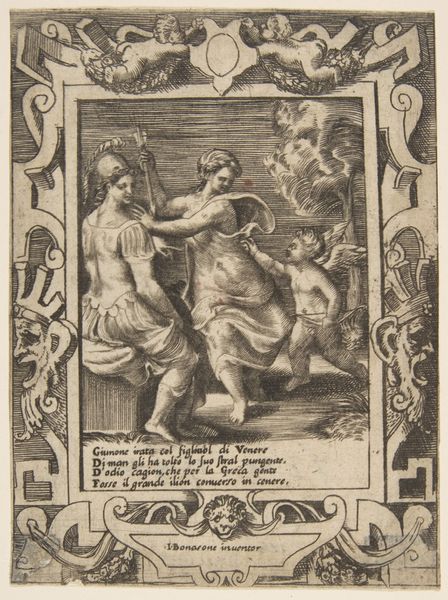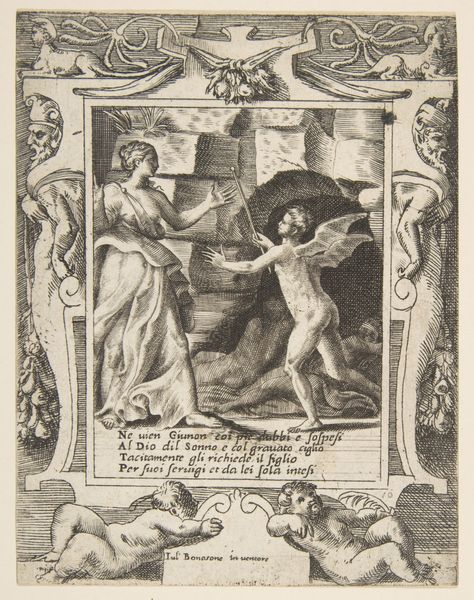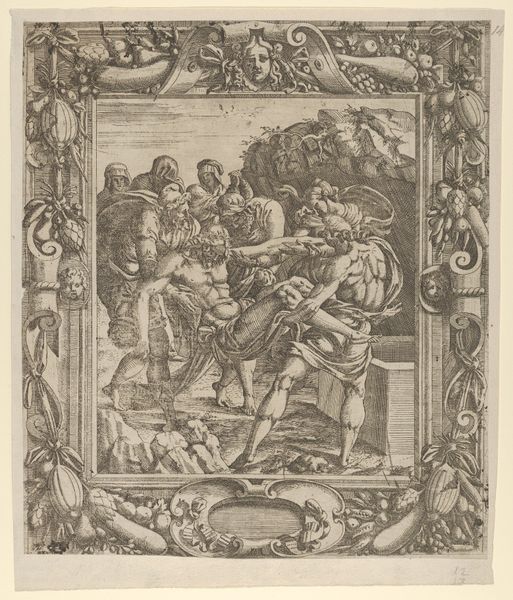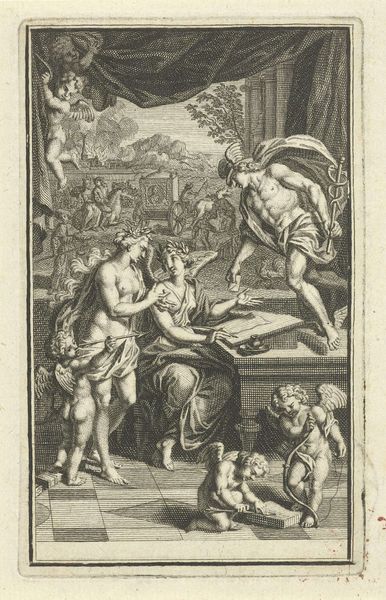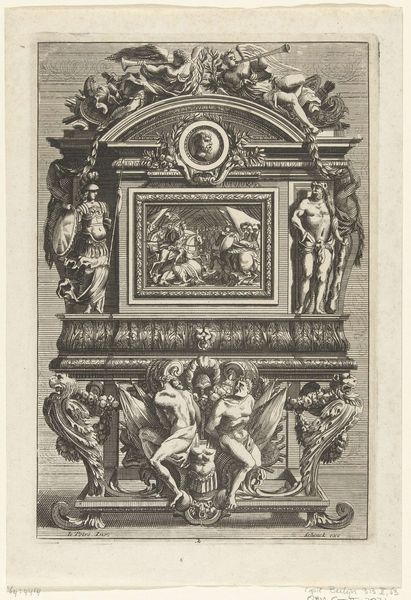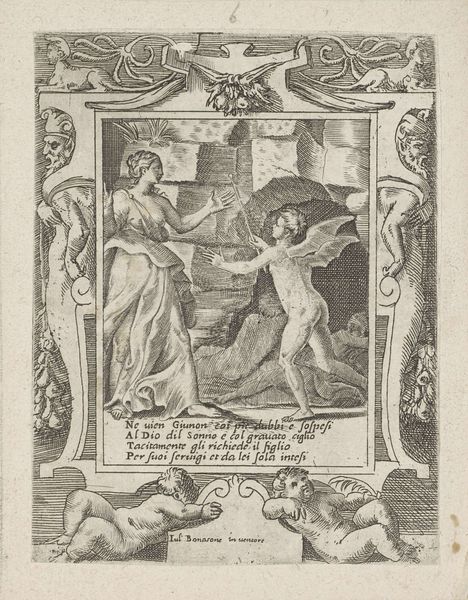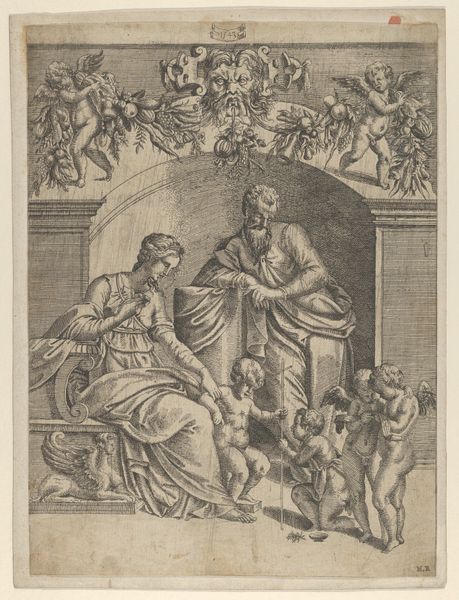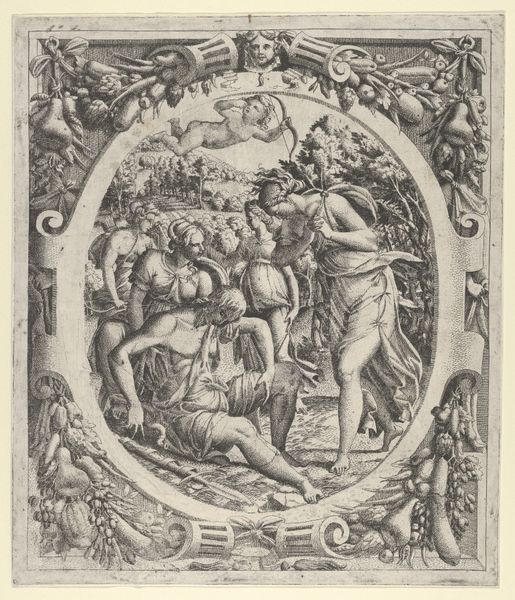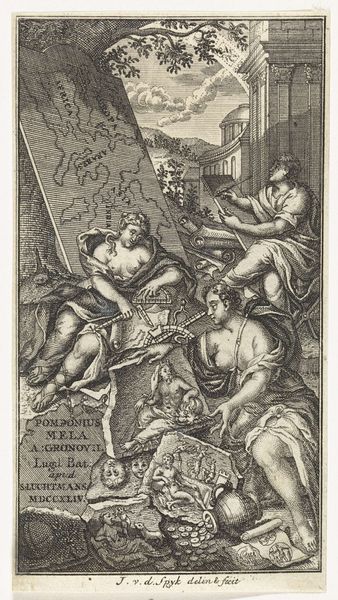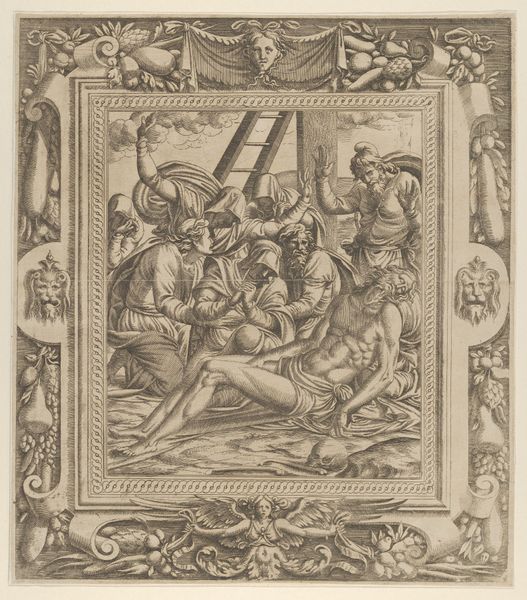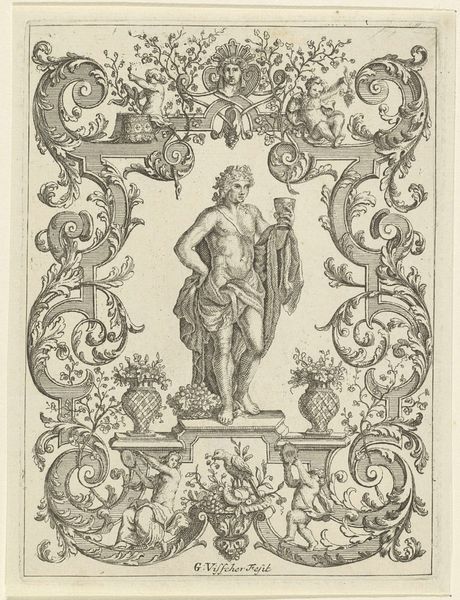
print, engraving
#
allegory
#
pen drawing
# print
#
old engraving style
#
figuration
#
line
#
history-painting
#
italian-renaissance
#
engraving
Dimensions: height 134 mm, width 101 mm
Copyright: Rijks Museum: Open Domain
Editor: This engraving, “Minerva seated next to Juno who takes away Cupid's arrows,” is by Giulio Bonasone and dates back to somewhere between 1501 and 1580. The linear quality is striking, so graphic. What stands out to you most about this print? Curator: Consider first the organization of space. The artist employed precise, unwavering lines, dictating every contour. Juno’s forceful gesture interjects into a serene composition, thus generating tension, while the frame acts to contain the visual narrative, wouldn’t you agree? Editor: I see your point. I didn’t initially consider how contained it felt with the frame so visibly rendered. So, are you saying the real power comes from the balance of line, space, and the implied tension in the scene? Curator: Precisely! Notice also the tonality of the figures, achieved entirely through line density, establishing volume, depth, and hierarchies within the pictorial field. Every element is intrinsically linked. Editor: This makes me rethink how I see prints; it's not just about the subject, but how the artistic elements create meaning. Curator: Yes, and how the interaction of those elements produces the effect. Consider that while some believe it's an allegory on the dangers of love or passion subverted by reason and prudence, there are textual indicators suggesting a potent allegory for hate. Editor: Thanks! It's insightful how this emphasis on form clarifies possible readings.
Comments
No comments
Be the first to comment and join the conversation on the ultimate creative platform.
